Would you like to easily make Japanese snacks? Kinako Nejiri is a traditional Japanese confection that is incredibly easy to make with just a few ingredients. It is perfect for a Japanese-style tea time.
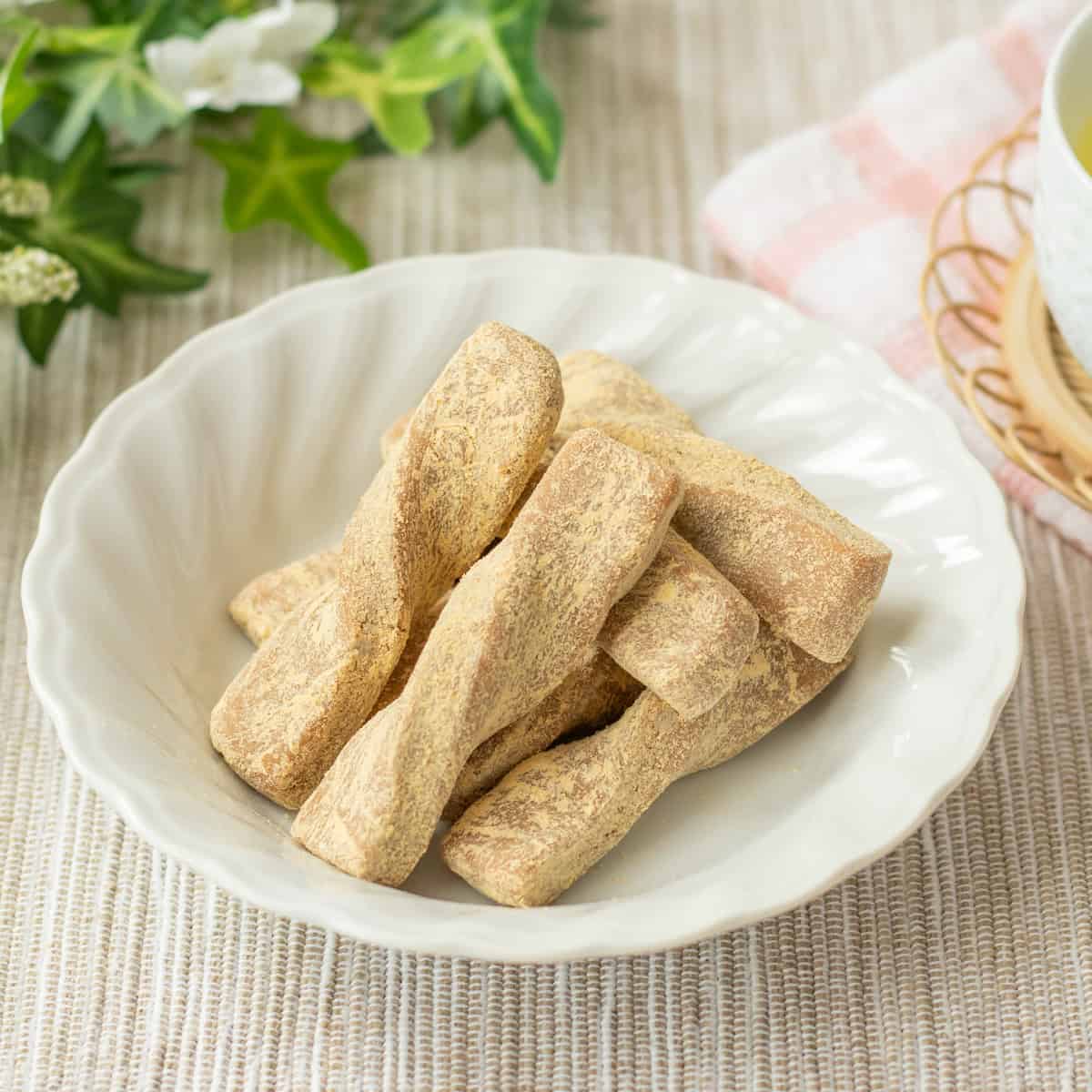
Jump to:
What is Kinako Nejiri?
Kinako Nejiri is a traditional Japanese confection made by mixing starch syrup with kinako and twisting it into a stick-like shape. "Kinako" refers to roasted soybean flour, and "Nejiri" means twist. Due to its stick-like shape, it is also known as "Kinako Bou" (kinako stick), though this version is not twisted.
It has a long history, dating back to the 17th century, when a confectioner in Kyoto created it as a celebratory snack. Because of its long shelf life and portability, it gradually spread throughout Japan. Today, it remains popular as a traditional snack enjoyed across the country.
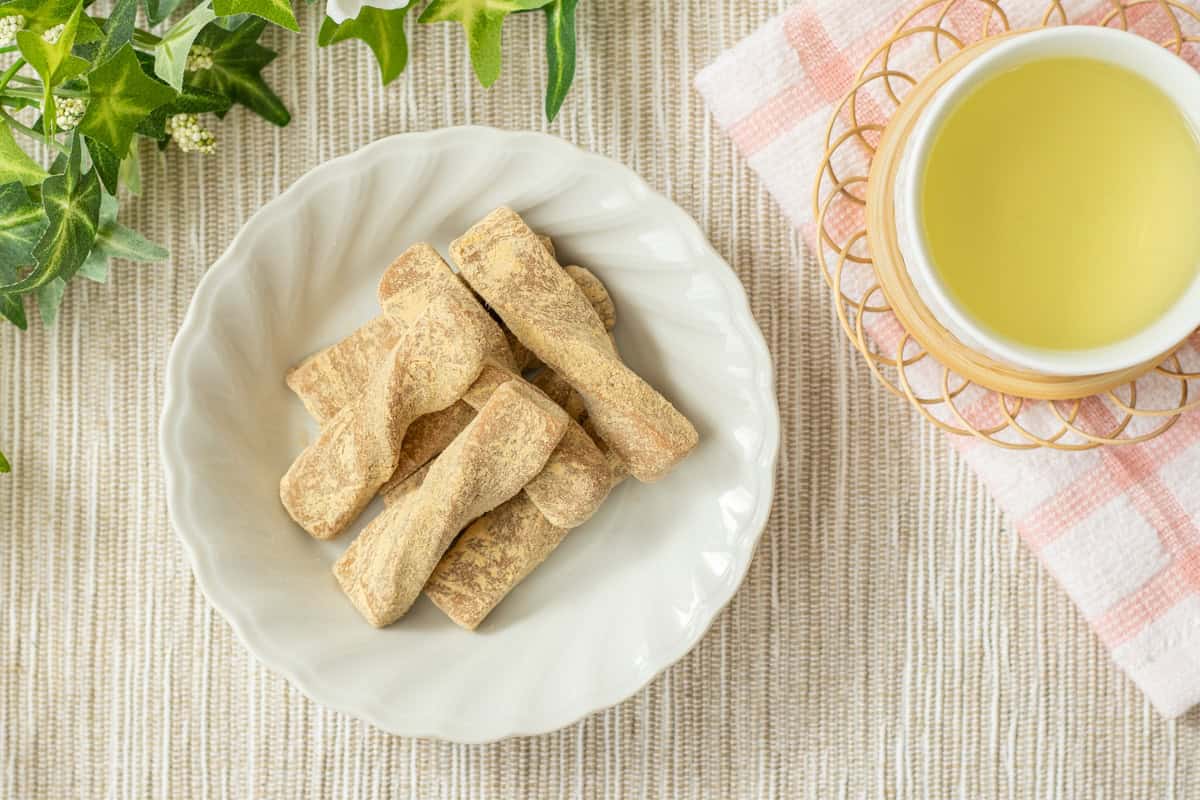
Introduction to kinako
Some of you might not be familiar with kinako at all.
It is a fine flour made by grinding roasted soybeans into a powder. It is typically made from yellow soybeans, which are roasted to reduce their distinctive smell and give them a savory aroma. While it is often translated into English as “roasted soybean flour” or “roasted soybean powder,” the literal meaning in Japanese is “yellow-colored (kina) flour/powder (ko).”
Kinako is easy to digest and absorb, allowing your body to take in the nutritional benefits of soybeans more efficiently. This is one reason why it is a popular ingredient in Japan, and some people even include it in their diet specifically for its health benefits.
The story behind the twisted shape
There is a reason why kinako nejiri has a twisted shape: it is modeled after a shimenawa.
A shimenawa is a sacred rope found at Japanese shrines that marks the boundary between the realm of the gods and the human world, and is believed to bring good luck in Japan. Originally, this confection was created to resemble the shape of a shimenawa using soybean flour. Over time, this twisted shape came to be seen as auspicious and became a snack casually enjoyed at home.
Therefore, when making this snack, it is common to twist it. However, if you want to simplify the process, twisting is not necessary. Feel free to enjoy it in whatever form you prefer.
Flavor variations
This traditional Japanese confection is typically enjoyed for its distinct soybean flour flavor, but you can also modify the taste by changing or adding ingredients.
In Japan, you can find variations made with green soybean flour (called uguisuko), as well as versions that incorporate ground sesame seeds or matcha powder. Start by trying the recipe as is, and if you are curious, experiment with different ingredients to find your preferred flavor.
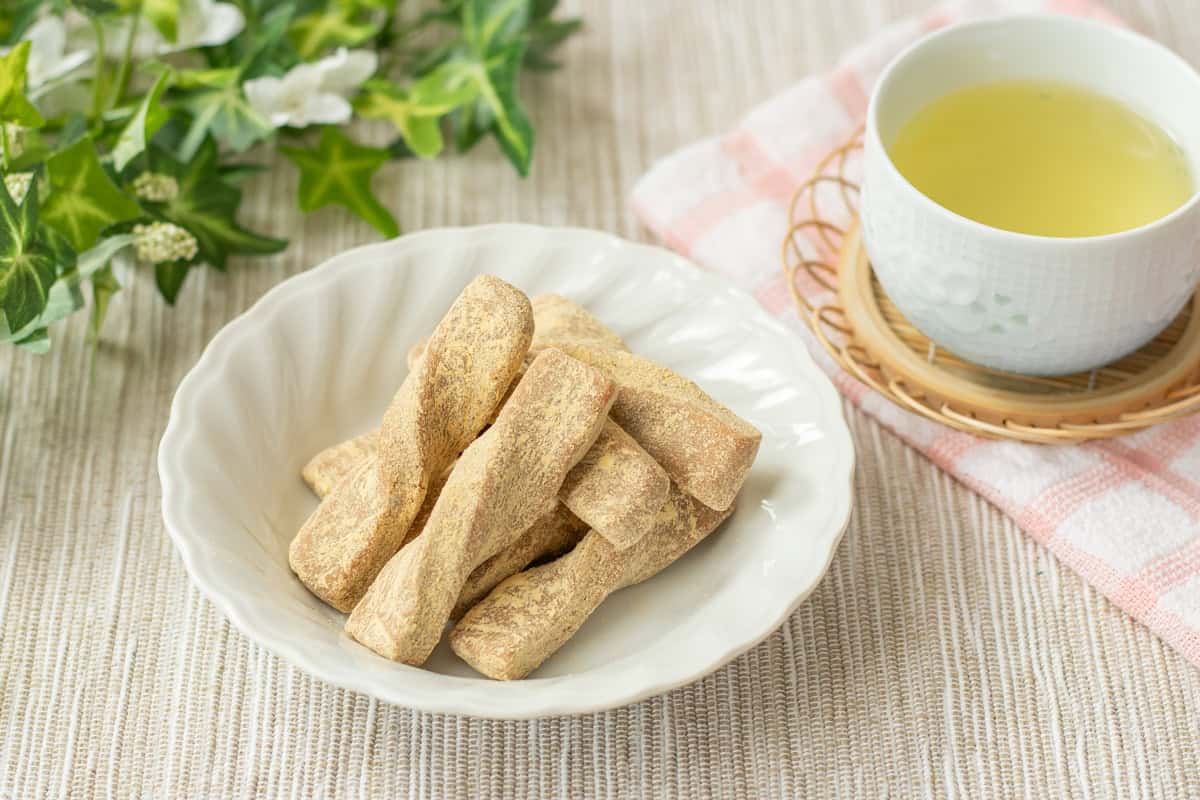
📋Step-by-step recipe
Ingredients
- 1.8 oz kinako (roasted soybean flour)
- 2.3 oz starch syrup (such as corn syrup) or honey
For coating:
- 1 Tbsp kinako
Instructions
🕒 Total: 10 mins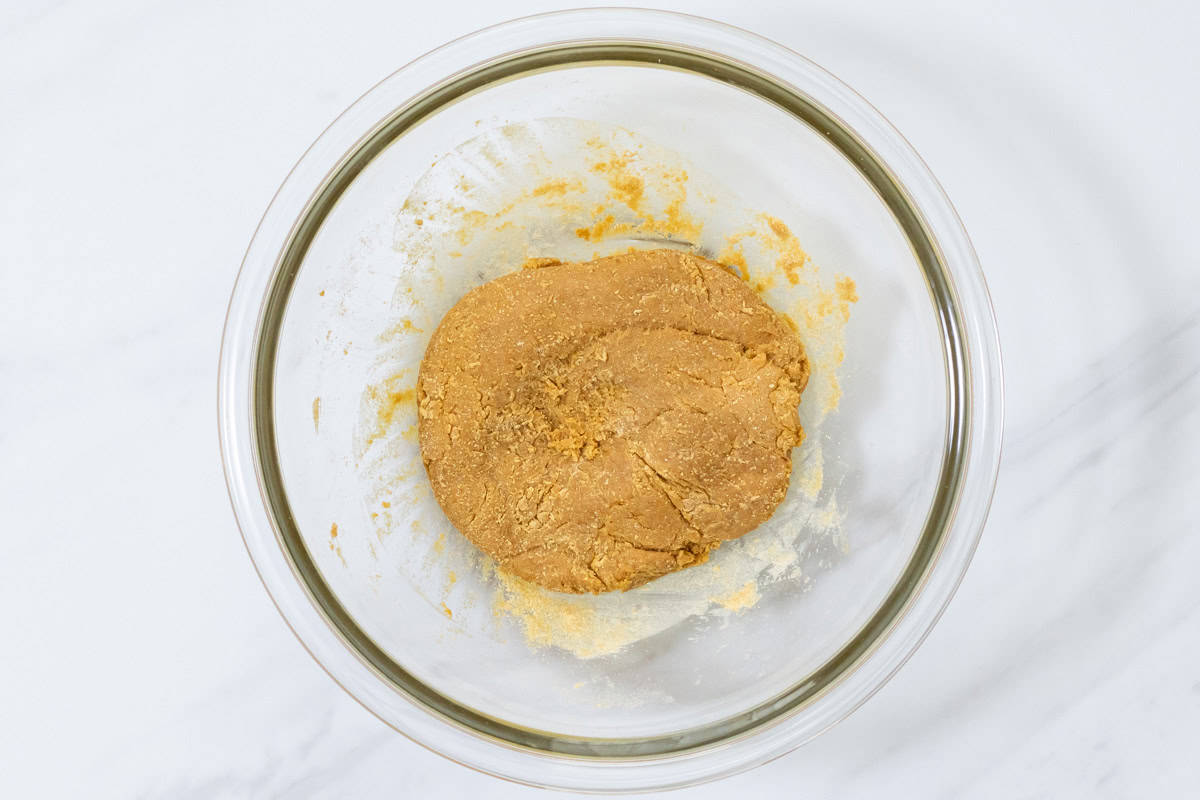
Step 1
Add starch syrup to a bowl and heat it over a double boiler or briefly in the microwave (about 30 seconds on medium power/500W), just until softened. Mix in kinako with a spoon or spatula until well combined and the mixture forms a cohesive lump with almost no powdery texture remaining.
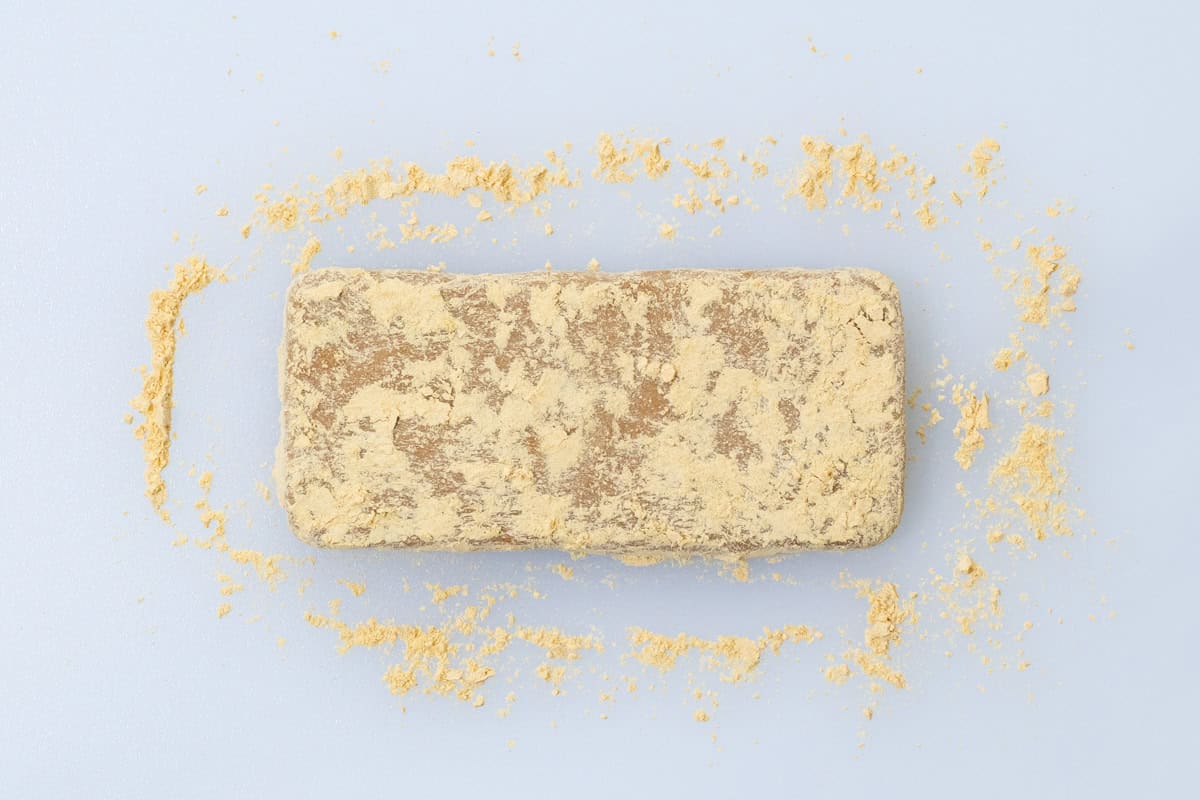
Step 2
Shape the dough into a rectangle about ½ inch (1.2 cm) thick and 2.5 inches (6.5 cm) long. Sprinkle kinako (for coating) evenly over the entire surface.
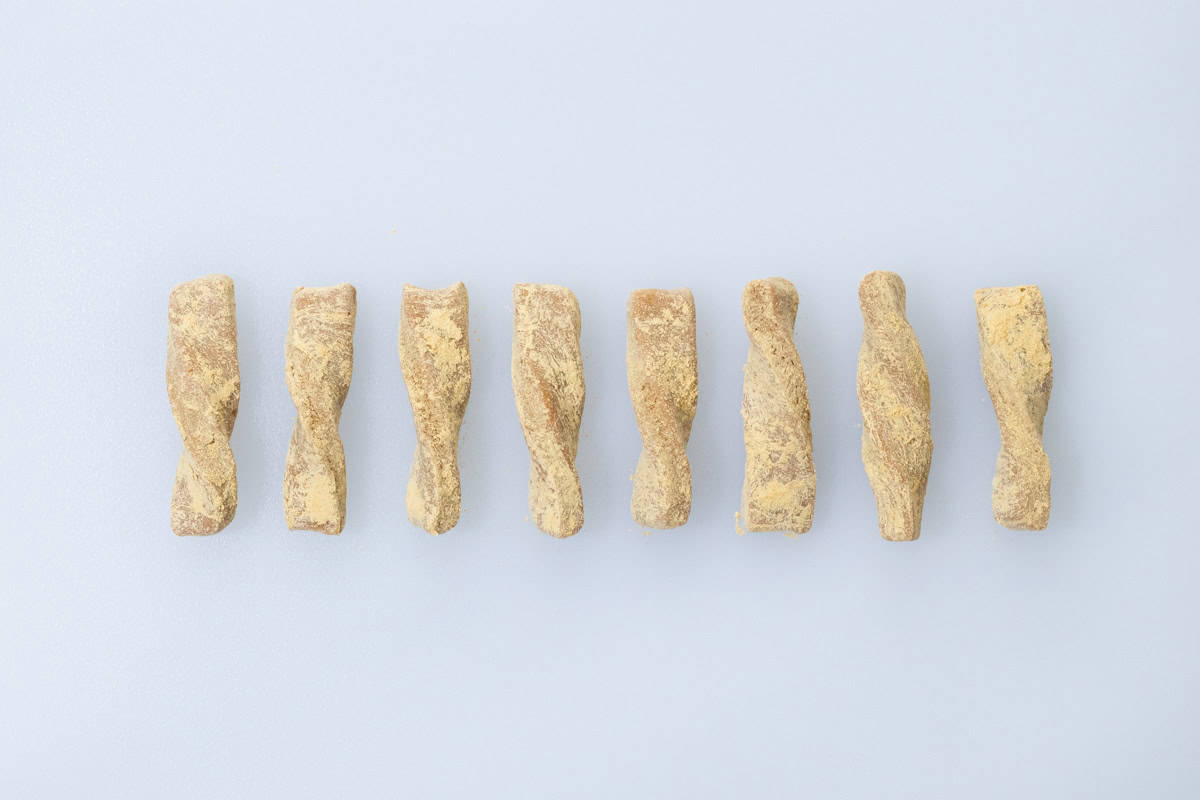
Step 3
Cut the dough into pieces measuring ½ inch (1.2 cm) by 2.5 inches (6.5 cm). Then, hold both ends of each piece and gently twist them in opposite directions.
To store
You can store it in the refrigerator for up to a month.
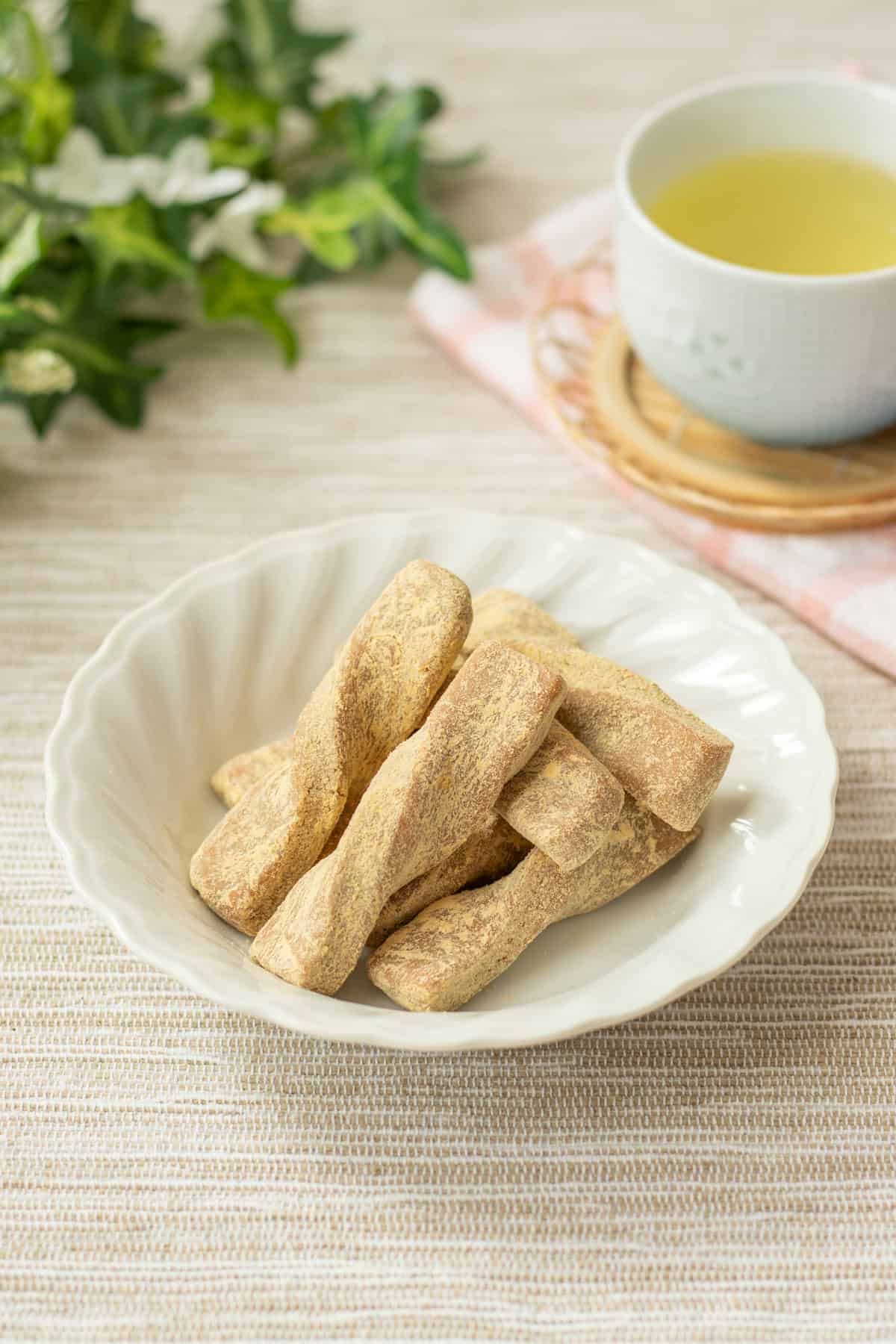
If you try this recipe, I’d love to hear what you think. Please consider leaving a review and star rating in the comments below. If you enjoyed it, I’d really appreciate it if you shared it with your friends.
More traditional Japanese sweet recipes you'll probably love
Recipe card

Kinako Nejiri (Japanese Twisted Soybean Flour Snack)
Ingredients
- 1.8 oz kinako (roasted soybean flour)
- 2.3 oz starch syrup (such as corn syrup) or honey
For coating:
- 1 Tbsp kinako
Instructions
- Add starch syrup to a bowl and heat it over a double boiler or briefly in the microwave (about 30 seconds on medium power/500W), just until softened. Mix in kinako with a spoon or spatula until well combined and the mixture forms a cohesive lump with almost no powdery texture remaining.
- Shape the dough into a rectangle about ½ inch (1.2 cm) thick and 2.5 inches (6.5 cm) long. Sprinkle kinako (for coating) evenly over the entire surface.
- Cut the dough into pieces measuring ½ inch (1.2 cm) by 2.5 inches (6.5 cm). Then, hold both ends of each piece and gently twist them in opposite directions.
Notes
- You can store it in the refrigerator for up to a month.

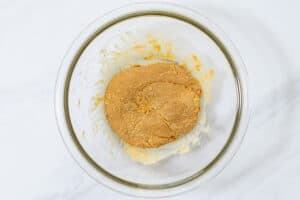
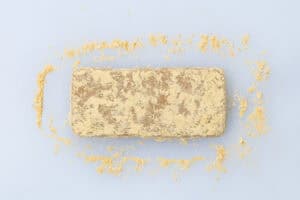


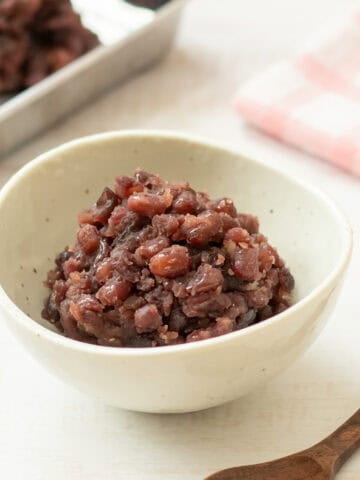


Leave a Rating and a Comment